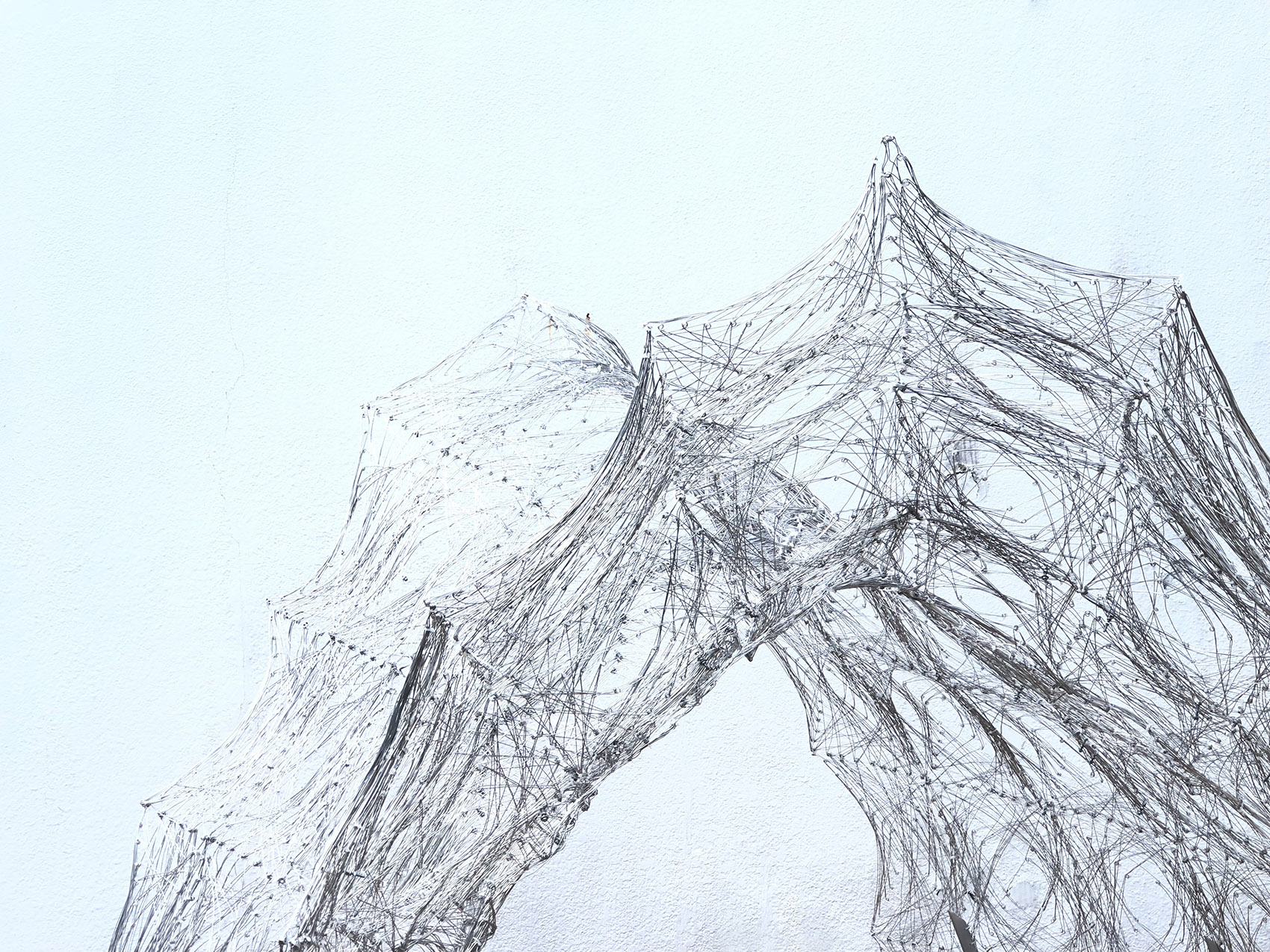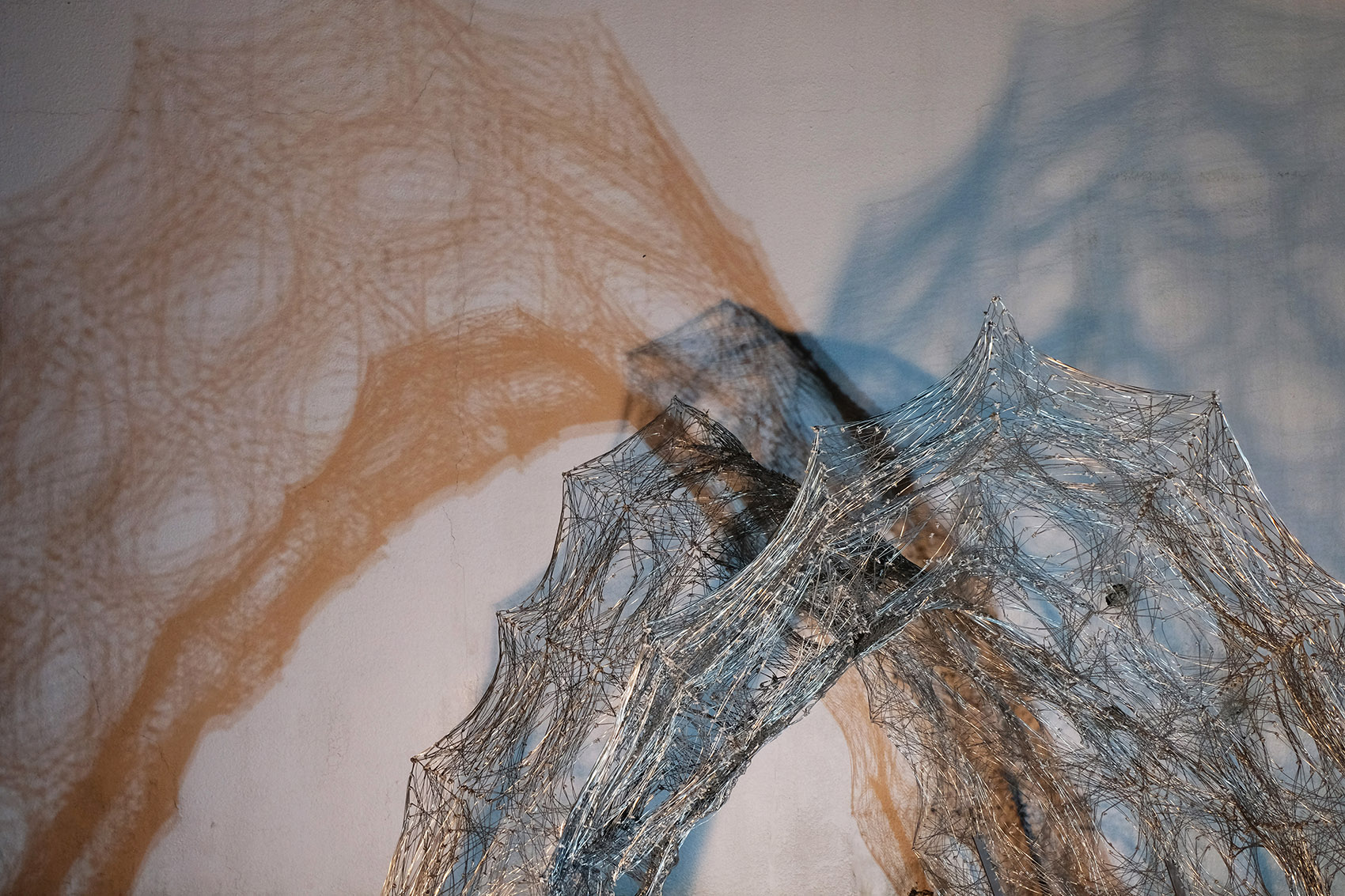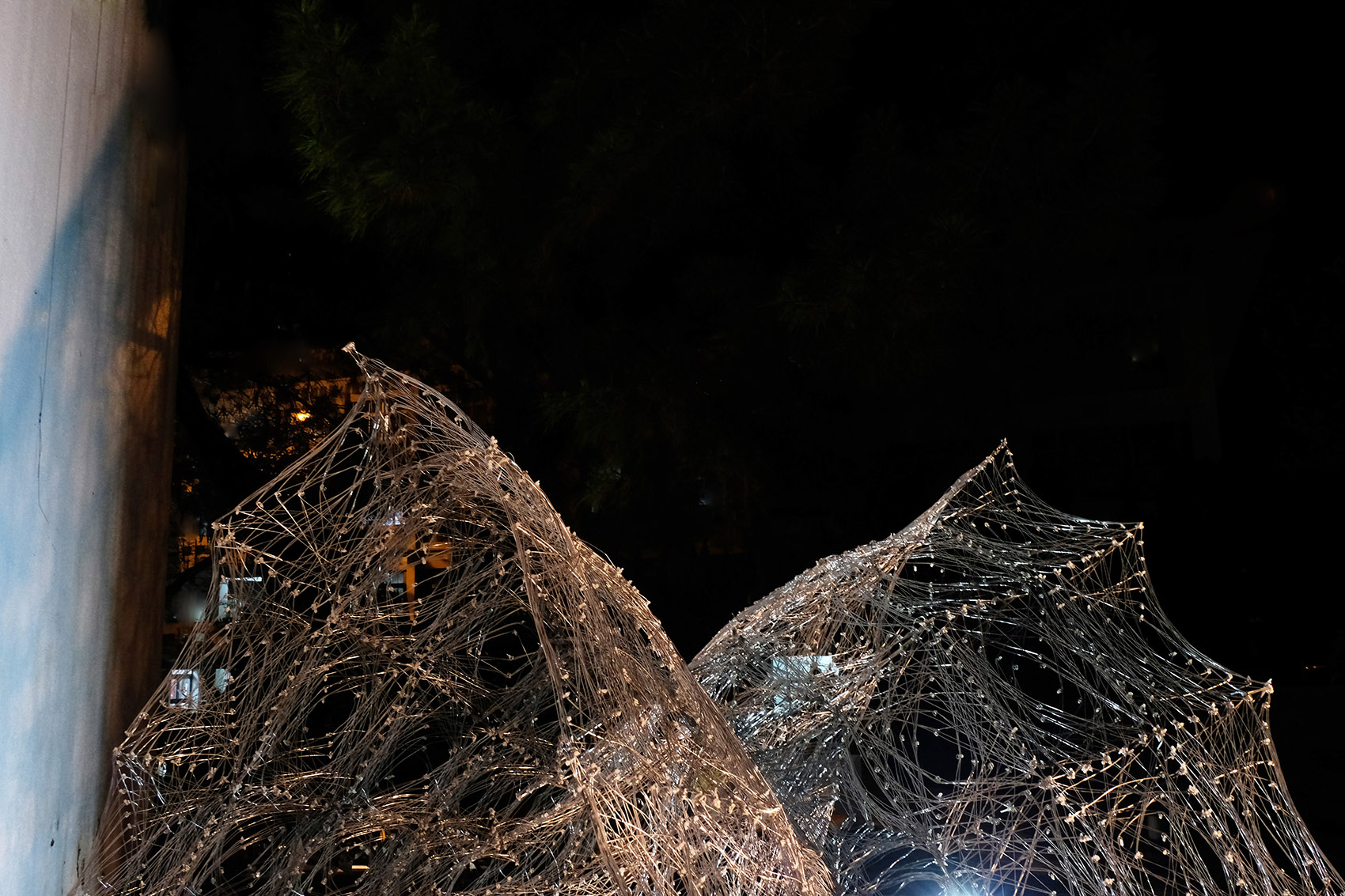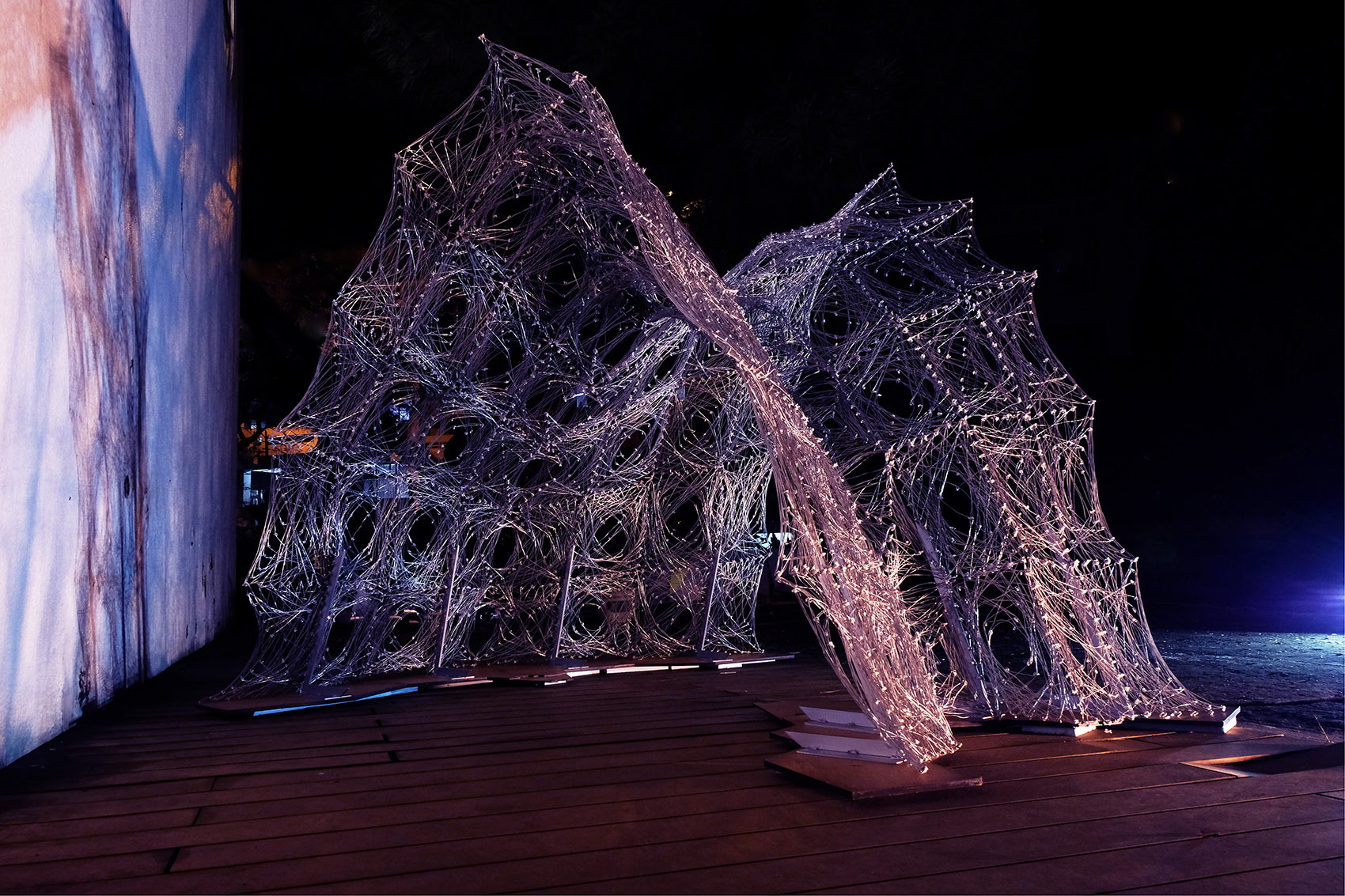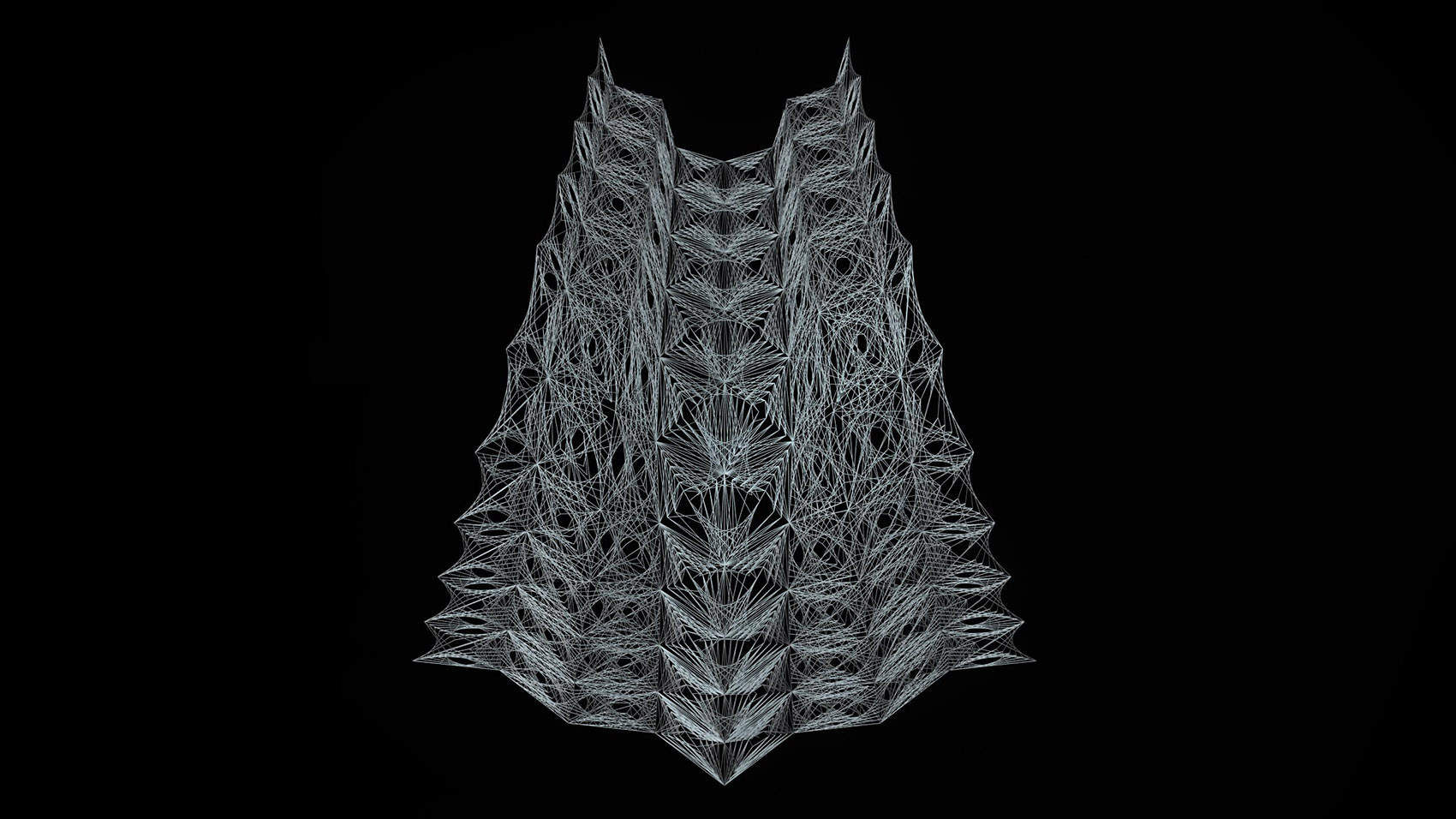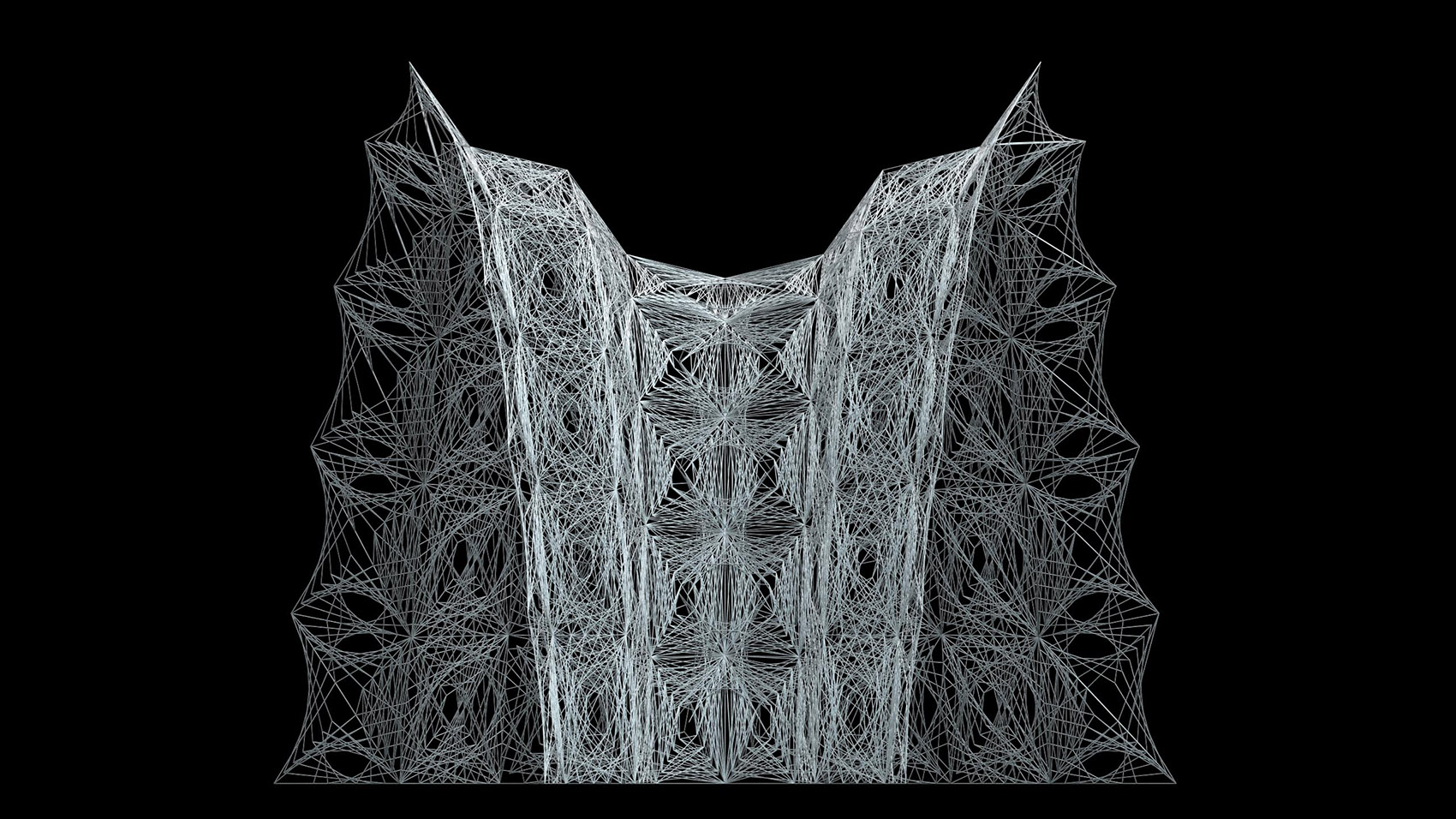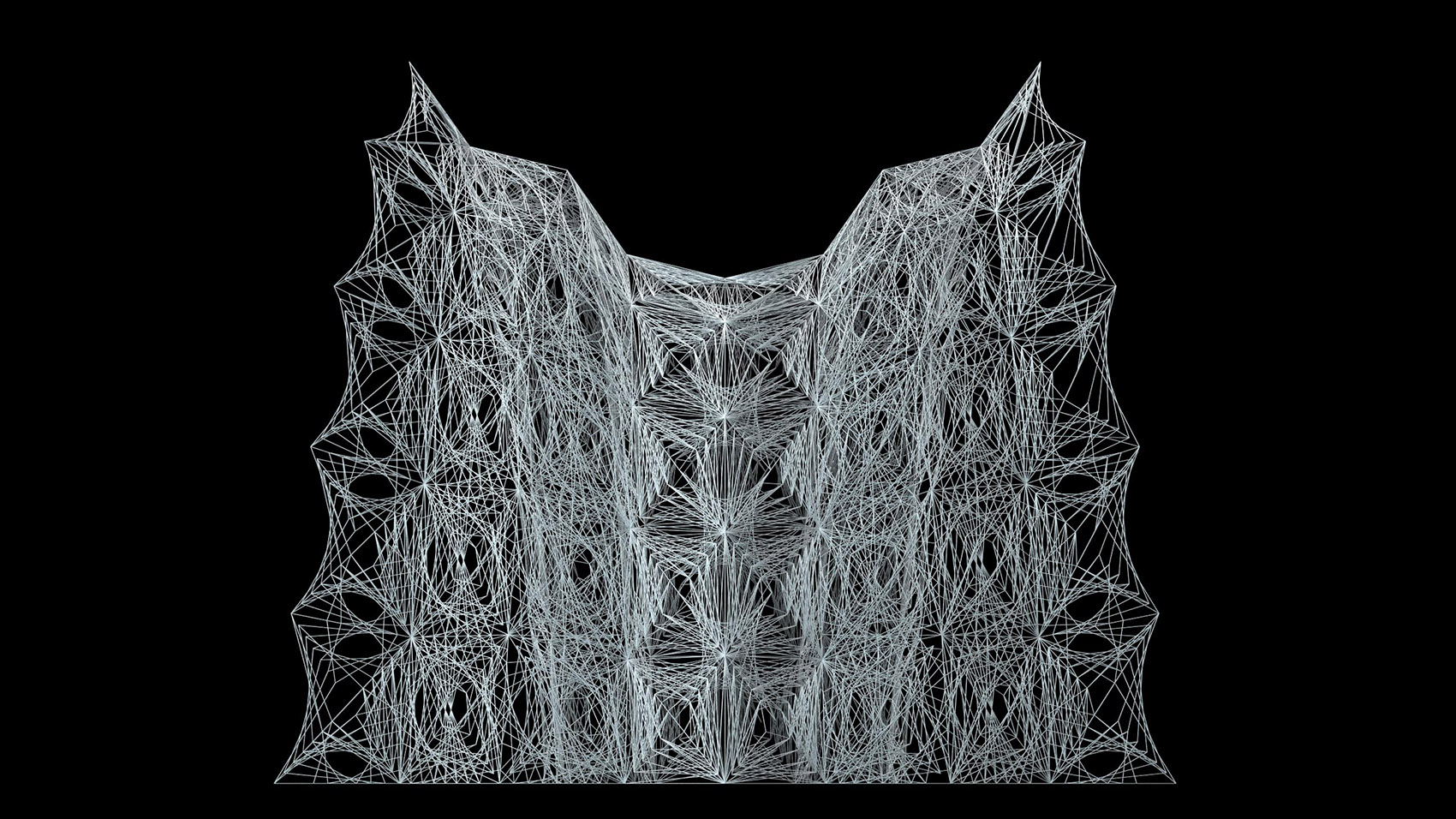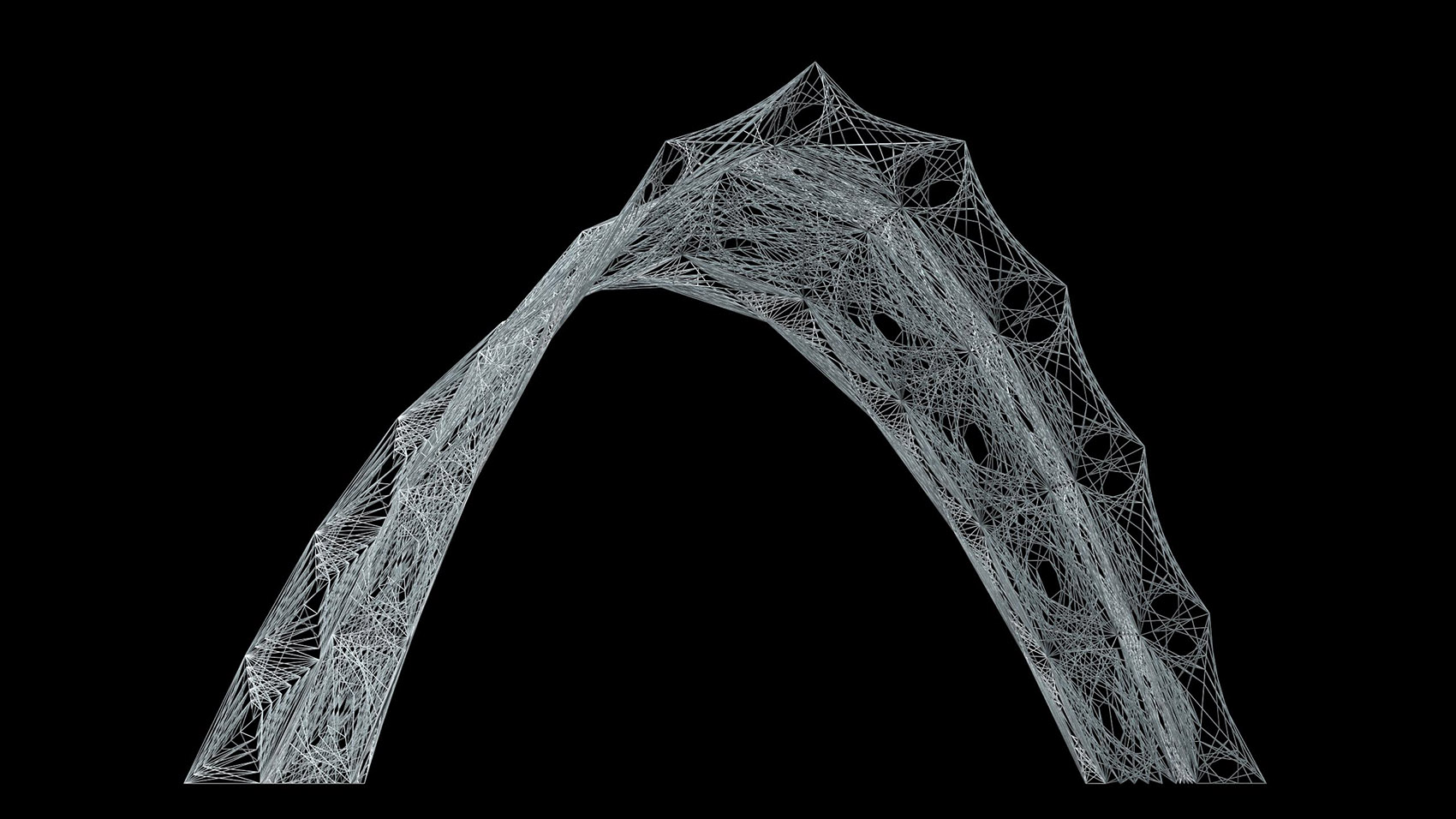在各个年代都有对透明性的论述,从Colin Rowe物理性的透明性和现象性的透明性到工业革命后Mies Van Der Rohe大量使用玻璃创造极简通透空间,妹岛和世则是利用这样的物理特质创造一种暧昧模糊的空间界线。透明性一词阐述的是一种非单调、具有层次、变化、丰富性高的空间组织方式,并且创造出多种空间形式和氛围。其中,某些固定的元素以“重复性”和“周期性”的方式表现。每个时期皆有因当时科技进步而发展出来对透明性不同的论述观点…而在电脑技术进步和工业4.0的今日,数位工具的特色是能够处理大量的差异。
From Colin Rowe’s Literal Transparency and Phenomenal Transparency to Mies Van Der Rohe’s using a big amount of glass to create minimal and transparent space after Industrial Revolution, there are discussions of transparency in each age. In addition, SANNA uses its literal feature to create a kind of obscure boundary line of the space. The word ‘transparency’ is describing a kind of non-monotonous, layering, diverse, and high-level richness way of spatial organization and to create a variety of spatial forms and atmosphere. Among which, there are some certain elements presented in “repeatability” and “periodically” kind of manners. Each period has a different point of views on transparency developed based on the advancement of science and technology at that time… And with the advance of computer technology and Industry 4.0 today, the distinguishing feature of the digital tool is that it’s able to handle a large number of differences.
▼装置外观,exterior view of the installation ©洪晞萍
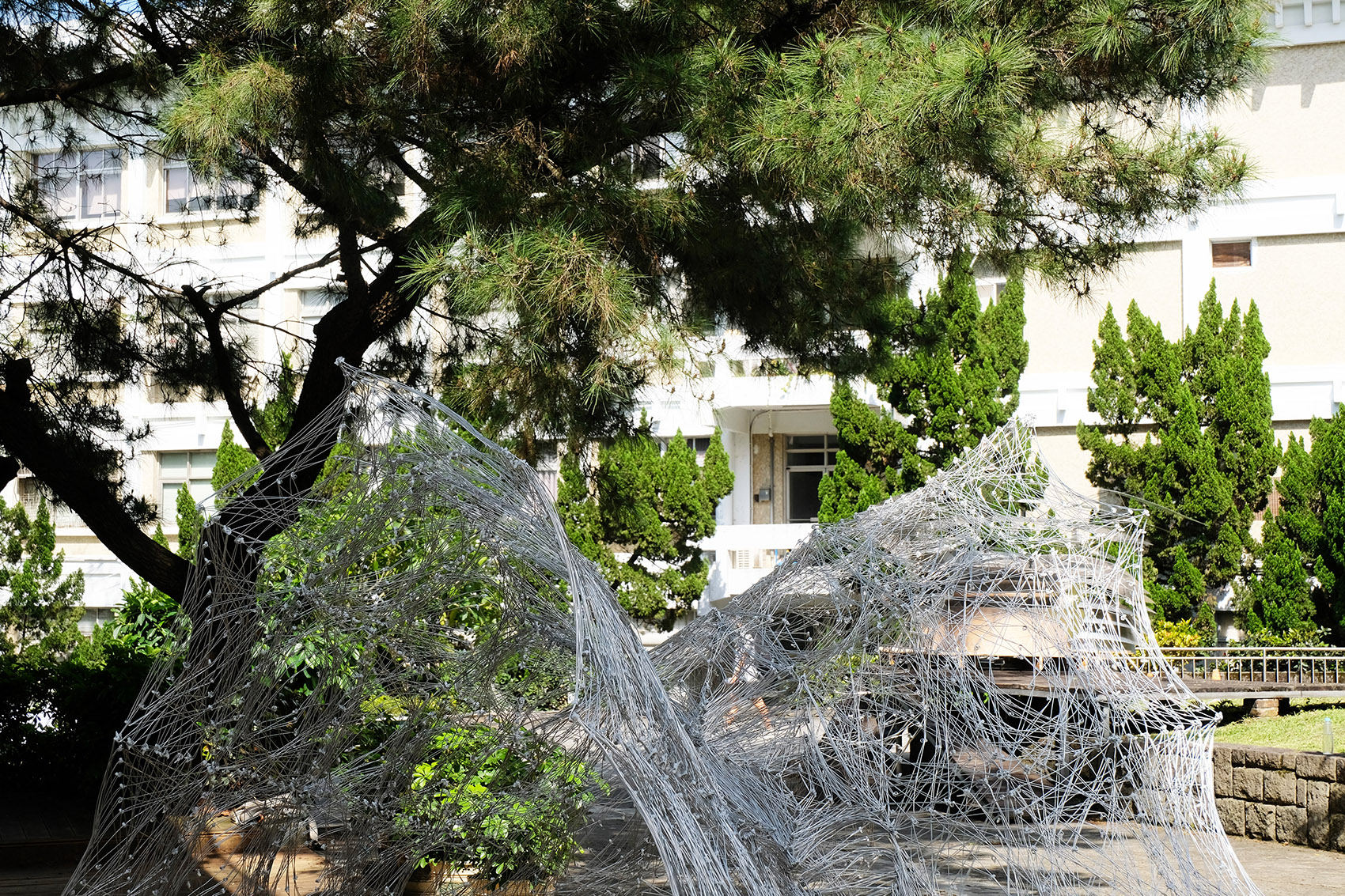
其中,欧普艺术即是以具有大量微小差异性的单元来产生视觉错视,因此,当这些小单元立体化成为3D组构元件时,人脑会反过来将3D空间诠释为2.5D或2D,也就是产生了空间扁平化的效果。微小单元在2D与3D之间的跳视与转化,进而产生了透明性中的矛盾性与共时性。然而在这样的条件下建筑的透明性会是如何?
Among which, OP Art is one using units with many small differences to create a visual illusion. Thus, when these small units formed into 3D fabric components, the human brain will, in turn, interpret 3D space as 2.5D or 2D, which means there’s an effect of space flattening. The small units’ saccade and conversion between 2D and 3D bring out the contradictoriness and synchronicity of transparency. However, what will be the transparency of architecture under such circumstances?
▼装置外观,具有一种透明性,exterior view of the installation with a sense of transparency ©洪晞萍
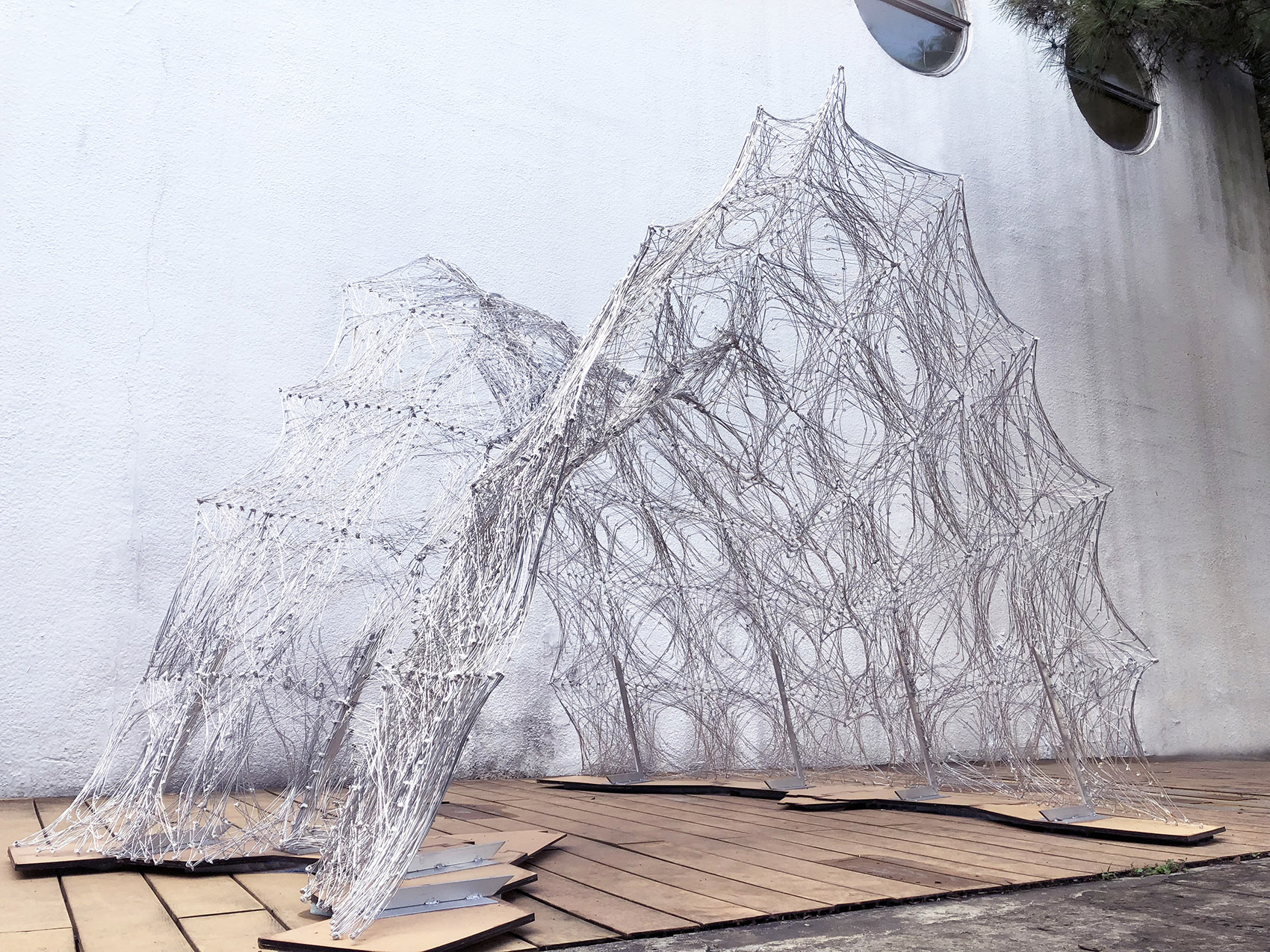
打破以往对于形体的构成,将几何碎化到最小的元素——线,来重新组构一个空间的想像。寻找图像对于视觉的影响以及材料对于空间所造成的光学变化。在完成电脑参数化设计的同时,便将构成设计的资料数据传输至制造端,并利用机械手臂完成复杂的图像缠绕,代替透过人力放样的漫长时间及制作过程的失误。试图去实现金属线材在空间中所表现的材料织理性。
Break the concept of the previous composition of the shapes, and turn geometric into the smallest element—lines, to reconstructing the image of a space. Search for the influence of image to the vision, and the optical changes of the materials to space. At the moment when the computer parametric design is completed, the data of the completed design is transmitted to the manufacturing end at the same time, and the robotic arm is used to complete the complex entanglement of the images, trying to realize the material textiles of metal wires in the space.
▼将几何碎化到最小的元素——线,来重新组构一个空间的想像,turning geometric into the smallest element – lines, to reconstructing the image of a space ©洪晞萍

▼装置外观局部,实现金属线材在空间中的材料织理性,partial view of the installation, realizing the material textiles of metal wires in the space ©洪晞萍

而在一比一的空间中进而体现了我们在寻找的一种透明性特质。是一种会随着光线的明暗、材料随着感光度而改变的光学变化,这样的视觉效果不仅仅发生在空间本身,对于周遭环境亦会有融合或是反射的效果。
Therefore, the feature of transparency I’m looking for is reflected in the one-to-one space. It’s a kind of optical change that will change according to the changes of the light and the materials change through the film speed. This kind of visual effect doesn’t only occur to space itself but also has the effect of fusion or reflection on the surrounding environment.
▼装置夜景,在灯光的配合下其影子被投射在墙面上,night view of the installation, its shadow is projected on the wall with the help of the light ©洪晞萍

▼装置夜景局部,partial night view of the installation ©洪晞萍

▼装置夜景局部,装置对于周遭环境有融合或是反射的视觉效果,partial night view of the installation, the installation has the visual effect of fusion or reflection on the surrounding environment ©洪晞萍

▼俯视图,top view ©洪晞萍
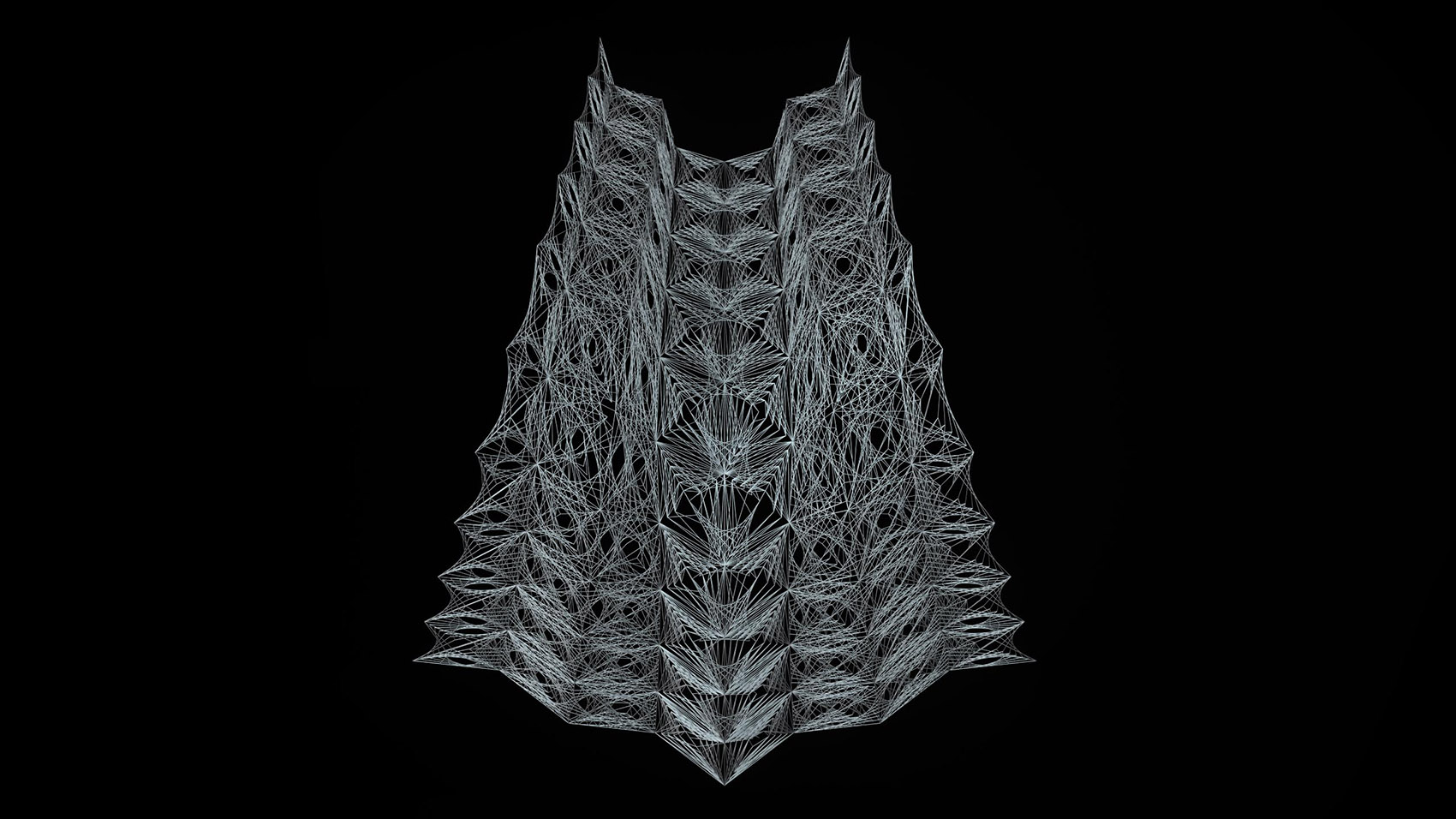
▼正立面图,front view ©洪晞萍

▼后立面图,back view ©洪晞萍

▼左立面图,left view ©洪晞萍

▼右立面图,right view ©洪晞萍

项目名称:(学生毕业设计项目)数位时代的透明性 – 机械手臂金属线材的织理性 设计方:洪晞萍 项目设计 & 完成年份:2019 主创及设计团队:HSI-PING HUNG / CHUN-CHUAN LO / CHA-CHING LIN / NICOLE TSAI / KAI-HSUN YEH / SHAO-WEI WANG / YU CHEN / PING-HSUN TSAI / GUAN-YI SIAO 项目地址:台湾,台北
Project name: Digital Transparency of Architecture_Robotic Metal Wire Knitting Design: HSI-PING HUNG Design year & Completion Year: 2019 Leader and Design Team: HSI-PING HUNG / CHUN-CHUAN LO / CHA-CHING LIN / NICOLE TSAI / KAI-HSUN YEH / SHAO-WEI WANG / YU CHEN / PING-HSUN TSAI / GUAN-YI SIAO Location: Taiwan.Taipei



